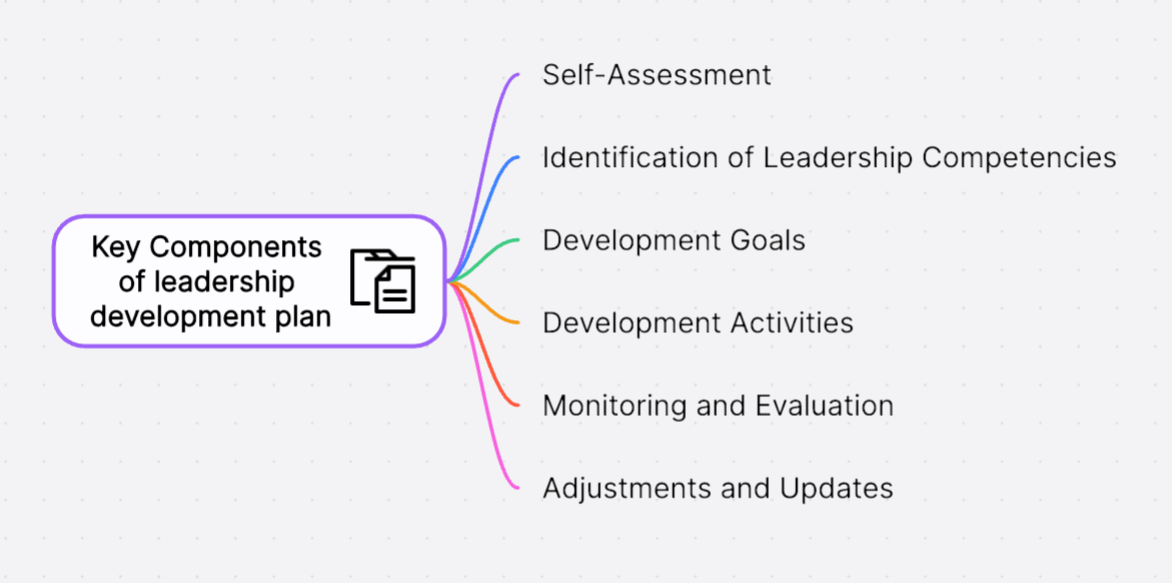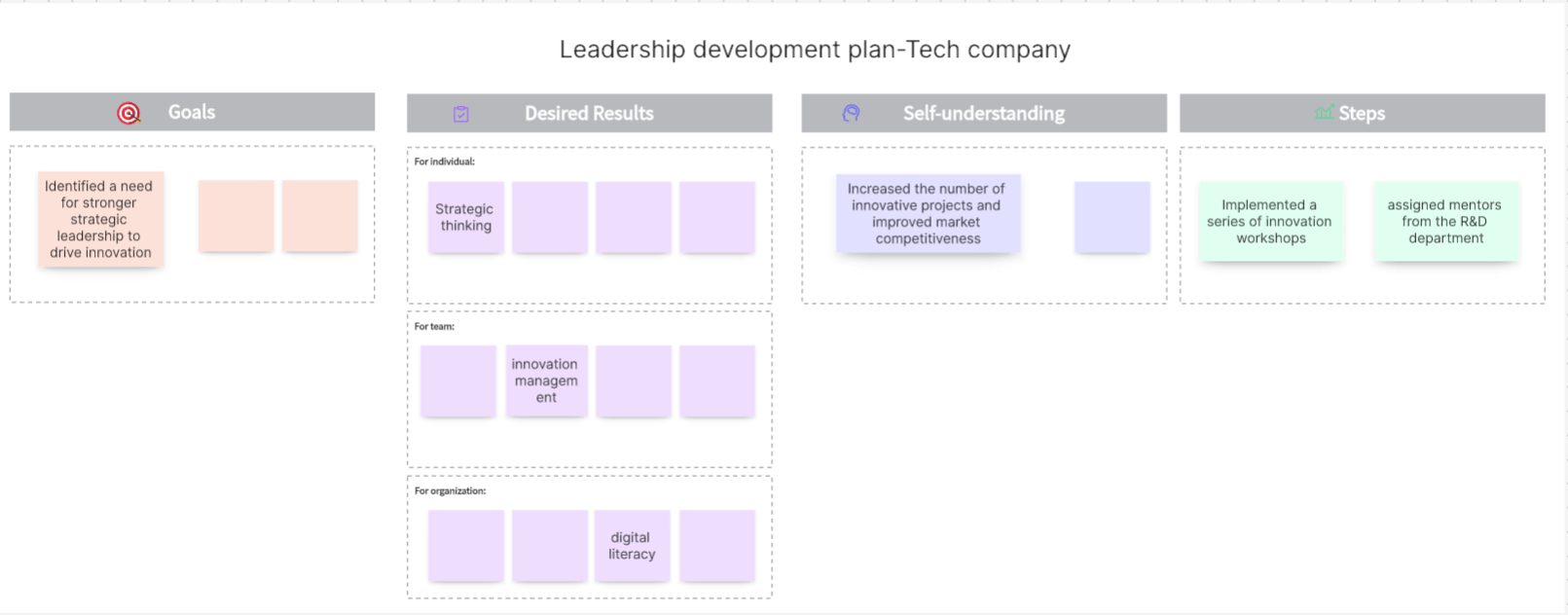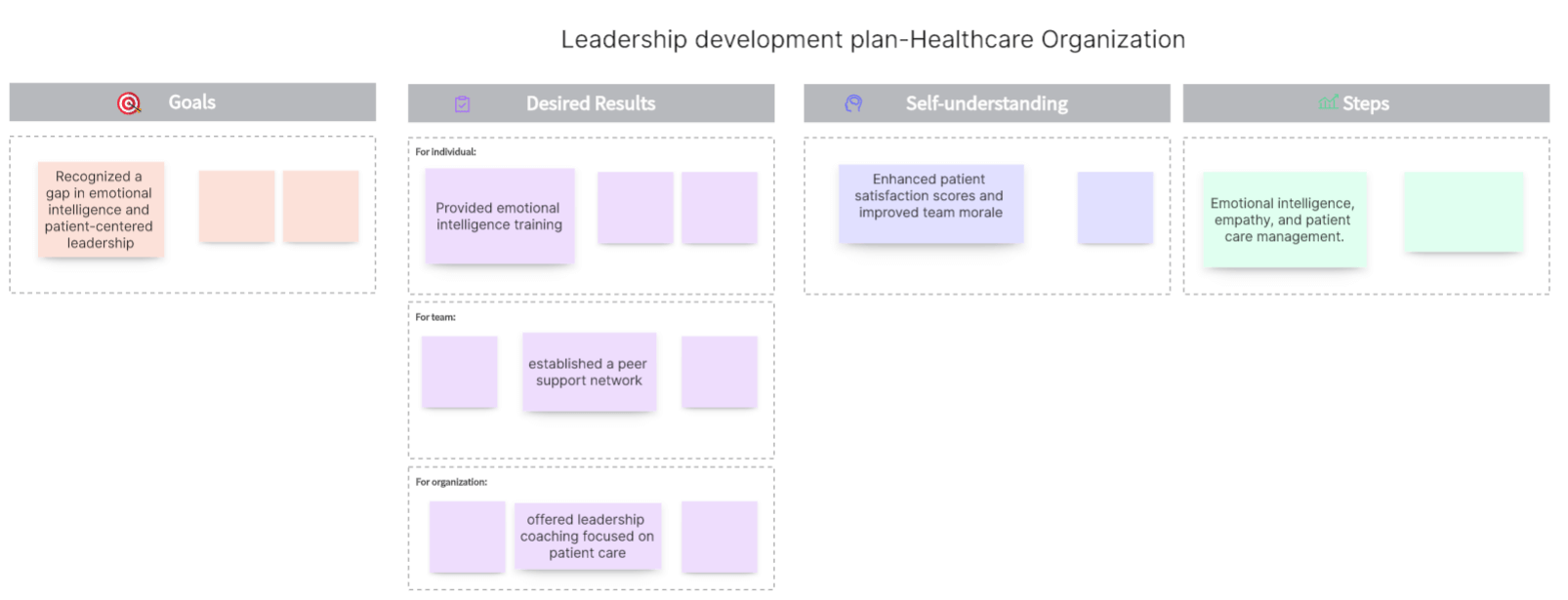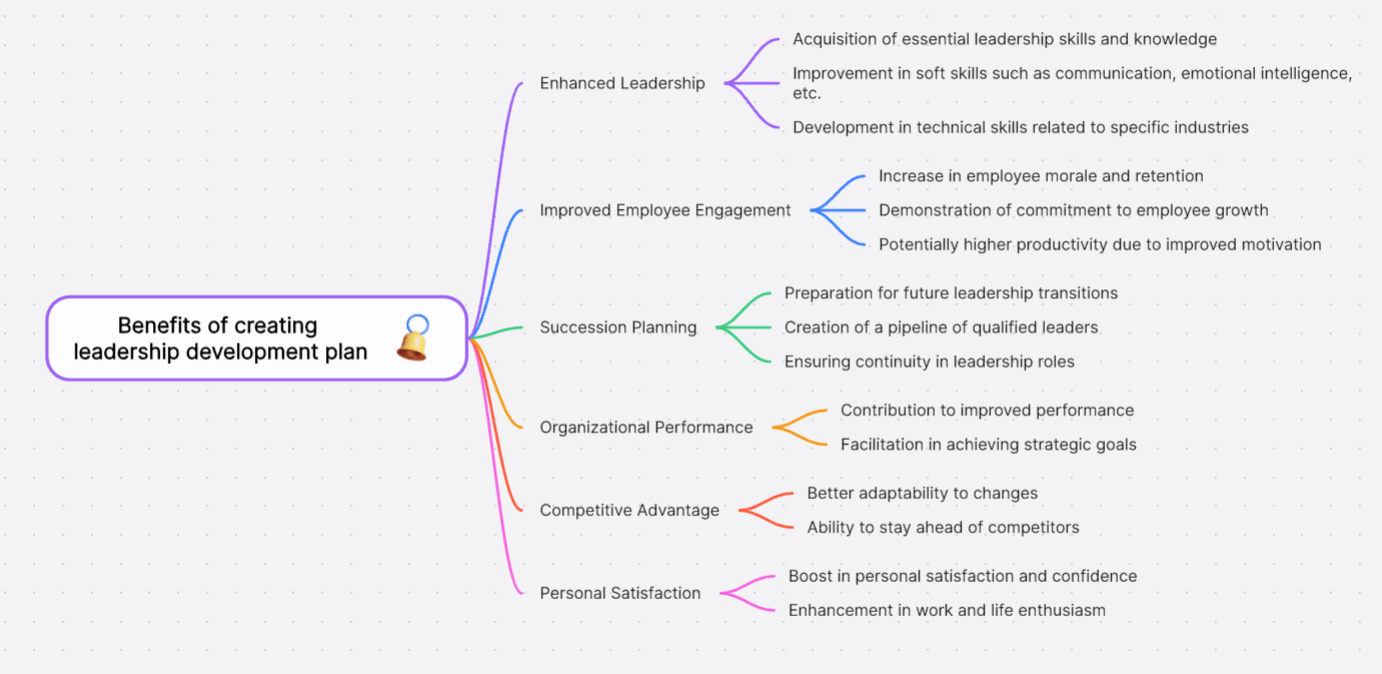In the modern business environment, effective leadership is pivotal to organizational success. A leadership development plan is a structured approach to nurturing and enhancing leadership capabilities within an organization. It ensures that current and future leaders are well-equipped to drive the organization towards its strategic objectives. The article aims to explore what a leadership development plan is and how to create a suitable and flexible leadership development plan, meanwhile offer some leadership development plan examples to you for learning.
What is a leadership development plan?

A leadership development plan is a comprehensive blueprint that outlines the strategies, activities, and goals for developing leadership skills among employees. It focuses on identifying and nurturing individuals who have the potential to lead, providing them with the necessary training, experiences, and support to excel in leadership roles. This plan is tailored to the specific needs of the organization and aligns with its long-term vision and goals.
Key Components of leadership development plan
Effective leadership development fosters a culture of continuous improvement, innovation, and employee engagement, which are essential for long-term success. If you want to improve your ability to create a leadership development plan, it is important to know the key components, which is beneficial for you to make an excellent plan.

Self-Assessment: This is the foundation of the plan. It involves a thorough evaluation of your current leadership skills, strengths, and weaknesses. Tools like 360-degree feedback assessments or personality tests can be very helpful in this stage.
Identification of Leadership Competencies: Defining the skills, behaviors, and attributes required for effective leadership. This could range from technical skills related to your industry to soft skills like communication, emotional intelligence, or conflict resolution.
Development Goals: Setting clear and achievable goals for leadership development. These goals should be SMART - Specific, Measurable, Achievable, Relevant, and Time-bound.
Development Activities: Activities are the important and practical part of the plan where you outline how you will acquire or improve the identified skills. Therefore, you should design and implement training programs, mentoring, and other developmental activities. These activities could involve formal training programs, mentorship, self-study through books or online courses, or on-the-job practice.
Monitoring and Evaluation: Continuously assessing the progress and effectiveness of the development plan. You can seek feedback or evaluation from colleagues, subordinates, mentors, or coaches.
Adjustments and Updates: Leadership development is an ongoing process that requires flexibility. Regularly reviewing your plan and making necessary adjustments based on changing circumstances or goals ensures that it remains relevant and effective. Meanwhile, Making necessary changes to the plan based on feedback and evolving organizational needs.
How to create a leadership development plan?
Creating a leadership development plan involves a series of strategic steps to ensure its effectiveness and alignment with organizational goals. Here are the essential steps to create leadership development plan:
Step1: Assess personal ability and organizational needs
Begin by evaluating your current leadership abilities. What are your strengths? Where do you need improvement? You can use tools like 360-degree feedback assessments or personality tests to gain an objective understanding of your skills. You should have a comprehensive awareness of your ability, and you can use SWOT analysis or PEST analysis to evaluate your leadership and using the results to create leadership development plan.
In addition, it is necessary to conduct a thorough analysis of the organization's current state and future aspirations. Identify the leadership gaps that may hinder achieving strategic objectives. This assessment should include input from senior management, HR professionals, and other key stakeholders to ensure a comprehensive understanding of the leadership landscape.
Step2: Define Leadership Goals
What do you want to achieve as a leader? Your goals should be Specific, Measurable, Achievable, Relevant, and Time-bound (SMART). Based your self-assessment and the organizational needs, the goals should be detailed as much as possible. For example, goals might include improving specific leadership skills, preparing individuals for higher-level roles, or enhancing the overall leadership culture within the organization. In addition, the goals also should be divided into short-term goal and long-term sustainable development goals which can help change the goal and make the suitable and flexible plan for the development of the organization.
Step3: Design Development Activities
Create a comprehensive development plan that includes a variety of activities to build leadership skills. These activities may include:
Training Programs: Offer workshops, seminars, and courses focused on leadership skills.
Mentoring and Coaching: Pair emerging leaders with experienced mentors or coaches who can provide guidance and support.
On-the-Job Experiences: Provide opportunities for leaders to take on challenging assignments, lead projects, or participate in cross-functional teams.
Feedback and Reflection: Encourage regular feedback and self-reflection to help leaders understand their progress and areas for improvement.
Leadership activities are a key stage, in which everyone can learn and practice technical skills and get straight feedback from others' responses that can improve leadership quickly. In other words, only through continuous learning and practical exercises can establish a direct understanding of leadership. In the process of communicating with others, we can better discover the shortcomings of our leadership, which will be reflected in the long-term development plan. Develop personal unique leadership skills.
Step4: Monitor and Evaluate Progress
Continuously monitor the progress of the leadership development plan to ensure it is meeting its objectives. Use key performance indicators (KPIs) and feedback from participants to assess the effectiveness of the development activities. Regular evaluations will help identify what is working well and what needs adjustment. According to the results of the evaluation, you can have a clearer understanding of the leadership development plan, and at the same time discover the parts of the plan that are suitable for you and the parts that are not suitable for you. You can also make timely adjustments to the designated series of plans and activities to reduce losses and risks.
Step5: Adjust the Leadership Plan as Necessary
Based on the feedback and evaluation results, make necessary adjustments to the leadership development plan. This may involve modifying the development activities, redefining goals, or addressing new leadership needs that arise. Flexibility is crucial to ensure the plan remains relevant and effective over time. In constantly adjusting the leadership plan, you will find the underlying logic of organizational operations and a training method that is more suitable for individuals.
The above are all the steps to create leadership development plan. If you want to change jobs or change your current working status, start a new company, or want to improve your self-confidence, you can try the above steps to create leadership development plan.
Leadership development plan examples
To illustrate the practical application of leadership development plans, you can use online tools to customize individual leadership development plans, and you also can use the template in Boardmix to demonstrate the plan. Here are detailed leadership development plan examples that you can use:
Example 1: Tech Company
Assessment: Identified a need for stronger strategic leadership to drive innovation.
Competencies: Strategic thinking, innovation management, and digital literacy.
Activities: Implemented a series of innovation workshops, assigned mentors from the R&D department, and launched a leadership rotation program.
Outcome: Increased the number of innovative projects and improved market competitiveness.

Example 2: Healthcare Organization
Assessment: Recognized a gap in emotional intelligence and patient-centered leadership.
Competencies: Emotional intelligence, empathy, and patient care management.
Activities: Provided emotional intelligence training, established a peer support network, and offered leadership coaching focused on patient care.
Outcome: Enhanced patient satisfaction scores and improved team morale

Using Boardmix, you can create visual elements such as charts, timelines, and checklists within each section to enhance clarity and facilitate easy tracking and updates. And you can create leadership development plan example online.
Benefits of creating leadership development plan
Developing a leadership development plan brings several benefits to an organization:

Enhanced Leadership: A structured development plan ensures leaders are equipped with the necessary skills and knowledge to lead effectively. Meanwhile, this could range from technical skills related to your industry to soft skills like communication, emotional intelligence, or conflict resolution.
Improved Employee Engagement: Investing in leadership development demonstrates a commitment to employee growth, leading to higher engagement and retention. Effective leaders know how to motivate their teams, leading to higher productivity levels.
Succession Planning: A leadership development plan prepares the organization for future leadership transitions by building a pipeline of qualified leaders. By identifying potential leaders early and nurturing their growth, organizations ensure continuity in leadership roles.
Organizational Performance: Effective leadership directly contributes to improved organizational performance and achievement of strategic goals.
Competitive Advantage: Organizations with strong leadership capabilities are better positioned to adapt to changes and stay ahead of competitors.
Personal Satisfaction: Lastly, seeing yourself grow and develop as a leader can bring a sense of personal satisfaction and confidence. Meanwhile, it is beneficial to enhance the enthusiasm for work and life.
Creating a professional leadership development plan is a strategic imperative for organizations aiming to thrive in today's dynamic business environment. By assessing personal talent and organizational needs, identifying key leadership competencies, evaluating current leadership, defining development goals, designing comprehensive development activities, and continuously monitoring progress, organizations can build a robust leadership pipeline. The benefits of such plans extend beyond individual growth, positively impacting overall organizational performance, employee engagement, and long-term success. Creating leadership development plan is not just an option but a necessity for sustainable growth and competitiveness.








